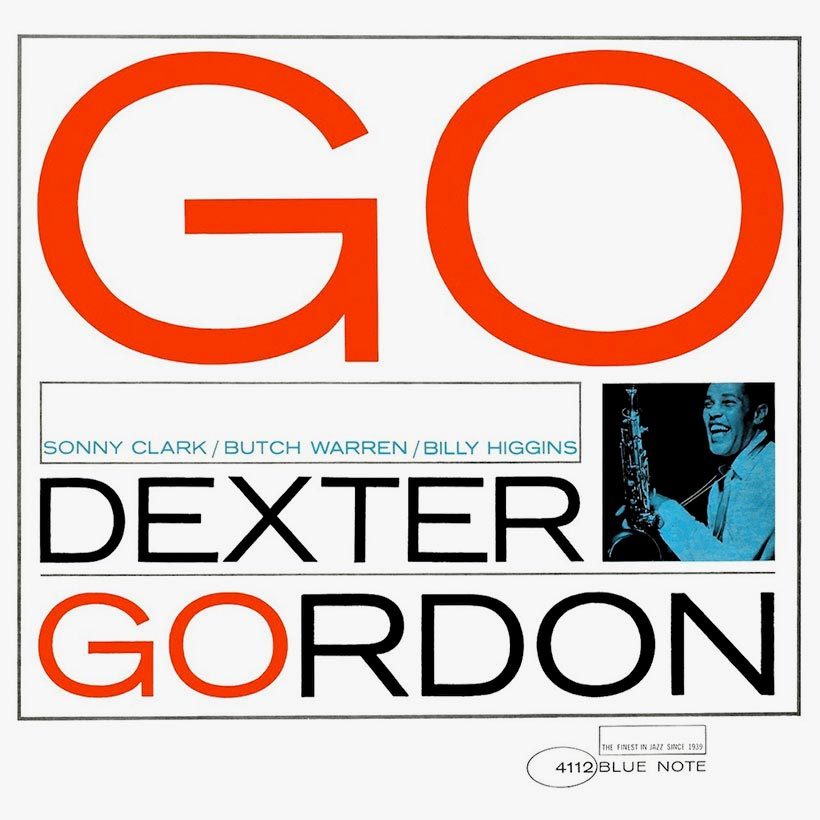‘Go’: How Dexter Gordon Raced Into The Jazz History Books
A towering achievement, ‘Go’ made saxophonist Dexter Gordon a bona fide jazz giant – and not just because of his towering physique.

Unanimously hailed by jazz critics as one of his greatest ever albums, Go was Dexter Gordon’s third LP for Blue Note Records. It heralded a remarkable upturn in the tenor saxophonist’s career, which briefly bloomed in the late 40s before floundering during the next decade as a result of his battle with heroin addiction.
Listen to Dexter Gordon’s Go now.
But by 1960, Gordon, a gentle giant from Los Angeles who stood at six-foot six-inches tall, appeared to have gained control of his demons and was driven by a newfound sense of purpose. The first tenor saxophonist to fully absorb the argot of bebop, Gordon visited New York in 1960 and attracted the attention of Blue Note boss Alfred Lion, who signed him to his label on November 7 of that year. It was the start of what was arguably the most fruitful recording period in the saxophonist’s career.
Gordon’s first two sessions for the label, in May 1961, resulted in the classic albums Doin’ Allright and Dexter Calling, whose critical success prompted Lion to put Gordon in the studio again. He scheduled a session for Monday, August 27, 1962; it would yield Go, an album that the saxophonist himself regarded as his favorite recording.
Lion had arranged for Gordon, who was then six months shy of his 40th birthday, to record with a younger rhythm section comprising 31-year-old pianist Sonny Clark (who had been making his own records for Blue Note since 1957) alongside two musicians still in their 20s: bassist, Edward “Butch” Warren and drummer Billy Higgins, whom Gordon was already familiar with, having played with them on Herbie Hancock’s debut album, Takin’ Off, three months earlier.
Go begins with an original Gordon composition, “Cheese Cake,” which quickly became a stalwart of Gordon’s live performances right up until his death, in 1990. The song was an unofficial homage to fellow tenor titan Lester Young and drew inspiration from the latter’s song “Tickle Toe,” though it was recast in a minor key. After Gordon’s statement of the song’s memorable “head” theme, he then breaks off for a magnificently fluid solo and shows that, despite the difficulties he encountered in the 50s, his musical ability never suffered.
Ballads were Dexter Gordon’s specialty and his interpretation of the Jules Styne-penned “I Guess I’ll Hang Out My Tears To Dry” is an exquisite example of his ability to show his softer, lyrical side. Nonetheless, his tone is virile and muscular, but his phrasing, which is sensuous and delicate, reveals a more vulnerable side. Gordon instinctively knows how to squeeze every drop of emotion out of a melodic phrase, but in a subtle way without being maudlin or melodramatic.
“Second Balcony Jump” is Gordon’s revamp of a 1946 swing record by crooner and bandleader Billy Eckstine. Gordon’s version is less frenetic than the original, though it’s still imbued with a propulsive sense of rhythmic élan. After stating the infectious main riff, Gordon embarks on an expansive solo that highlights his melodic invention. It also includes a melodic snippet from Nat “King” Cole’s 1950 hit “Mona Lisa,” reflecting Gordon’s love of quoting from other songs in his solos.
Gordon also drops in a quote from “Mexican Hat Dance” on his jaunty interpretation of Cole Porter’s jazz standard “Love For Sale,” where the rhythm section initially creates a Latin-style undertow before launching into a passage of full-throttle swing.
Go’s second and final ballad is “Where Are You?,” co-authored by noted songwriter Jimmy McHugh, who was also responsible for penning the standards “I Can’t Give You Anything But Love” and “The Sunny Side Of The Street.” Prior to Gordon’s Blue Note recording, the song had been covered by singers Frank Sinatra and Johnny Mathis, as well as jazz instrumentalists such as Ben Webster and Kenny Dorham. But Gordon, with simpatico accompaniment from his young quartet, summons up the essence of late-night loneliness with a tender interpretation that captures the forlorn mood of the song’s lyrics.
The mood is lighter on the gently swinging “Three O’Clock In The Morning,” which ends the album on an upbeat note. The original song was a hit in 1922 for bandleader Paul Whiteman, but here Dexter Gordon transforms it into a bebop-inspired vehicle that highlights the fluency of his saxophone improvisations.
Though Gordon would go on to release three more superb albums for Blue Note (including A Swingin’ Affair, recorded with the same personnel just two days after Go), it is the LP he made on August 27, 1962, that stands tallest in the saxophonist’s catalogue.










